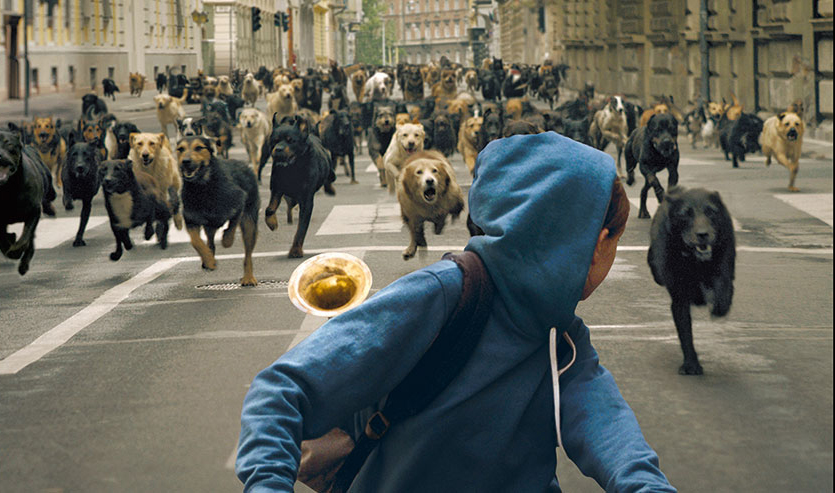By providing your information, you agree to our Terms of Use and our Privacy Policy. We use vendors that may also process your information to help provide our services. This site is protected by reCAPTCHA Enterprise and the Google Privacy Policy and Terms of Service apply.
‘White God’ Director on Unleashing 250 Dogs on Budapest and Why More Films Should Take Risks

 You have never seen a dog movie like “White God,” the singular cinematic effort that won Cannes’s top prize in the Un Certain Regard section last year. With echoes as disparate as “Lassie,” “The Birds,” and “Amores Perros,” Kornél Mundruczó’s genre-bending fable imagines a world in which marginalized stray dogs uprise against their cruel human oppressors.
You have never seen a dog movie like “White God,” the singular cinematic effort that won Cannes’s top prize in the Un Certain Regard section last year. With echoes as disparate as “Lassie,” “The Birds,” and “Amores Perros,” Kornél Mundruczó’s genre-bending fable imagines a world in which marginalized stray dogs uprise against their cruel human oppressors.
When 13-year-old Lili is sent to stay with her emotionally distant father in Budapest, she brings along her other half: a soft-hearted but rambunctious rescue dog, Hagen. But the reality that meets them is unwelcoming and indifferent to their bond. “Mutts have to be reported in Hungary,”a neighbor admonishes, and proceeds to call the police. Lili must send Hagen back to the streets. What ensues is an Odyssean journey that exposes Hagen to darkest impulses of humanity.
Incredibly shot without the aid of CGI, Mundruczó and his team unleashed 250 dogs into the streets of Budapest to create the film’s most thrilling sequences. The sight of hundreds of dogs storming the streets plays like a childhood fever dream. Perhaps even more incredible is the performance Mundruczó and the trainers elicited from the two dogs that play Hagen; not even Old Yeller could out-act these expressive brothers, who speak volumes with their eyes, body language, and acute reactions. Though “White God” succeeds as an unflinching criticism of humanity and gritty allegory of the political tensions inundating contemporary Europe, it’s the familiar story of a girl and her lost dog that gives the film its beating heart.
Indiewire sat down with the contemplative Mundruczó to discuss the forces behind “White God,” from the ethos of risk-taking filmmaking to the reason why everyone should own a pet dog. The film is currently playing at the New Directors/New Films festival in New York and opens this Friday in select theaters.

Are you a dog lover or animal rights advocate?

 They’re complex.
They’re complex.



Were there any films that influence your visual style?
By providing your information, you agree to our Terms of Use and our Privacy Policy. We use vendors that may also process your information to help provide our services. This site is protected by reCAPTCHA Enterprise and the Google Privacy Policy and Terms of Service apply.

















